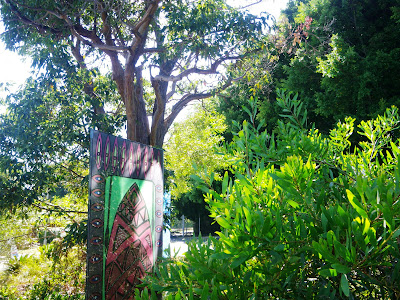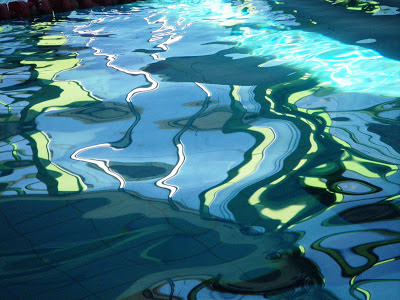Visiting some of the
Art and About exhibitions and installations in Sydney last month got me thinking about art at pools. The motto of
Art and About is 'art in unusual places', and from 21 September to 21 October that's what you find in the city's parks, lane ways, streets and malls.
"We try every year to use places we haven't used before," said creative director Gill Minervini in an article in
The Sydney Morning Herald. "We're always looking for new spots," she said.
If Minervini and her team considered pools they would find that art is already a feature at a number of centres.
By the 50-metre pool at
Cook and Phillip Park Aquatic Centre in the city are eight murals by Sydney artist
Wendy Sharpe depicting the life of Australian swimmer and performer
Annette Kellerman.
The
'bold and sensual' studies tell the story of key events in the life of the 'Diving Venus' including becoming NSW 100 yards freestyle champion in 1902 and competing in the annual Parisian swimming race on the Seine. Other panels portray her arrest for indecent exposure on a Boston Beach for wearing her self-created one-piece cossies, her daring and exotic aquatic feats in shows around the world, and her rise to stardom in silent movies like the mythological underwater film
Neptune's Daughter.
Swimming a slow backstroke is a relaxing way to view the paintings and take in the life of this trail-blazing Australian, who believed emancipating women from the chains of neck-to-knee swimming costumes was her greatest achievement!
Another pool with an artistic side is
Leichhardt Park Aquatic Centre in Sydney's inner west.
In the native garden leading to the entrance are seven glass installations by
Bronwyn Bancroft honouring the original indigenous people of the area.
Called 'Weavings of Light and Life' they represent the land and foreshore, food collection, fishing, song-lines, kinship, a shield protecting lands and family, and water.
The Bundjalung artist said she deliberately chose glass as the medium for the panels so that the sun's rays would interact with the designs throughout the day. The works also connect beautifully with the native plants around them and are a colourful welcome to visitors to the pool.
A few kilometres up the road, a striking blue mosaic welcomes patrons to the
Annette Kellerman Aquatic Centre at Enmore Park.
Near the entrance a chrome-plated brass ribbon designed by artist Julia Davis wraps around the building, connecting with the surface of the pool and reflecting the light and movement of the water.
In the foyer area is a glass sculpture inspired by the figure of Marrickville-born Annette Kellerman. Created by local artist Mark Wotherspoon,
Silver Screen Mermaid depicts the shapely curves of a mermaid figure.
The almost two-year-old centre also features a remnant of a mosaic from the original Enmore Pool. It's displayed in one of the pool's outdoor areas and shows people of all ages communicating, diving and relaxing around water. It also features greetings in community languages.
The use of vibrant colours, spots and stripes and interesting shapes gives the centre a lively and creative edge that appropriately reflects the artistic spirit of its namesake.
I wonder if next year's
Art and About will venture into the aquatic spaces of the public pool?

















































